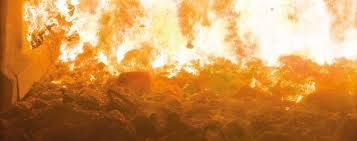
incinerators animal
Class 2 Industrial Incinerators
Class 2A: Commercial
Incinerators for the disposal of waste that contains hazardous, potential hazardous and bio-medical waste where the
operator exceeds 100 Kg/day.
- Dimensions: 2.2m(l) x 1.5m(w) x 2.5m(h)
- Fully automatic computer multi control system.
- Fuel Options- Diesel and natural gas, electricity
- Wasted fuel- >12L/h
- The incinerator should burn up to 200kg < of waste per hour.
- Min.temperature-750癈<
- Max.temperature-1000癈<
Class 2B: Small Scale Incinerators for Private Use
Incinerators for the disposal of hazardous, potential hazardous and bio-medical waste where the operator does not
exceed 100 kg/ day.
Class 3: General waste Incinerators
Incinerators for general waste that is non toxic, non hazardous, non medical or does not contain organic halogens,
i.e., selected customs, police, contraband goods, offices waste, commercial waste and industrial wastes) where the
operator does not exceed 1 ton/ day.
STANDARDS, GUIDELINES, CRITERIA, PROCEDURE FOR INSTALLING/OPERATING INCINERATORS
No. Parameter Standards, Guideline, Criteria and Procedure
1 Basic Plant Design An approved plant must have four distinct sections that demonstrate three principles of
Turbulence, Residence Time and Temperature are inbuilt in the plant design .The regulated sections may include but not
limited to:
Overall plant layout.
Feed chamber/ charging —build by local customer
Primary Combustion Chamber. –yes
Secondary Combustion Chamber. –yes
Particulate Scrubbers—- filter brick chamber included
Acid Gas Scrubbers—none
The stack/ chimney. –yes
2 Feeding And Charging Controlled hygienic, mechanical or automatic feeding methods have to be used which will
not influence the air temperature in the primary and secondary chambers of the incinerator negatively.
No waste is to be fed into the incinerator:
- Until the minimum temperatures have been reached.—manual feeding
Please incorporate a mechanical feeder
- If the minimum combustion temperatures are not maintained. –yes
- Whenever the previous charge has not been completely combusted in the case of batch feeding. –yes
- Until such time as the addition of more waste will not cause the design parameters of the incinerator to be
exceeded. –yes
3 Primary Combustion Chamber The primary combustion chamber must:
- Be accepted as the primary combustion zone. –yes
- Be equipped with a burner/s burning gas/fuel or low sulphur liquid fuels. Other combustion methods will be
judged on merits.
- Ensure primary air supply is controlled efficiently–yes
- Ensure minimum exit temperature is not less than 850oC—800-1000 oC
4 Secondary Combustion Chamber (Afterburner). The secondary combustion chamber must:
- Be accepted as secondary combustion zone. –yes
- Be fitted with secondary burner/s burning gas or low sulphur liquid fuel or any suitable fuel. –yes